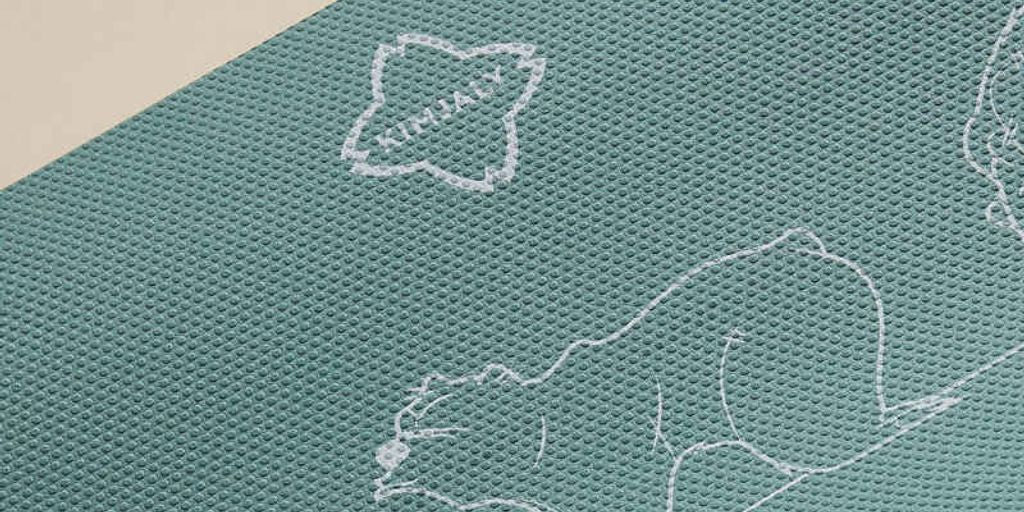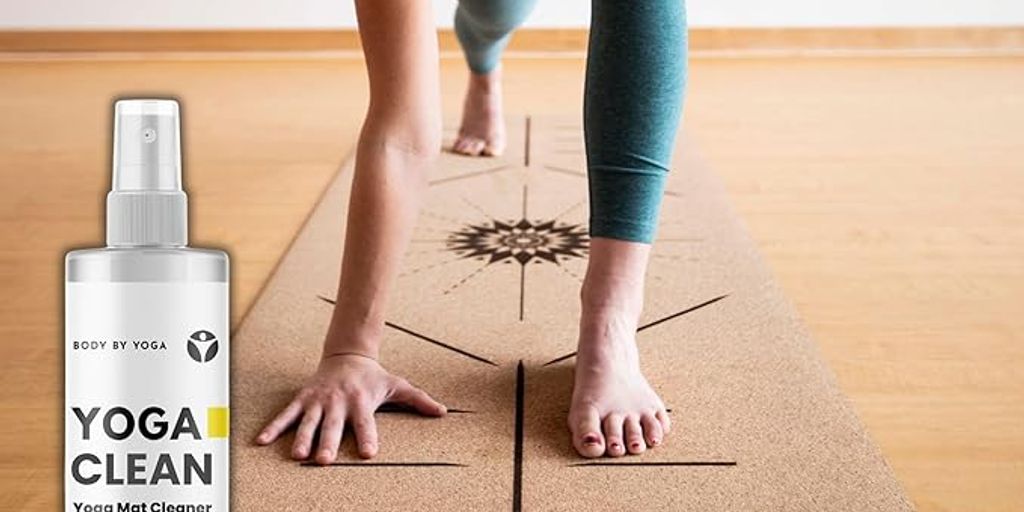
Finding the Perfect Yoga Mat: Tips and Tricks to Hit Your Target
Choosing the right yoga mat can make a big difference in your practice. Whether you're new to yoga or have been practicing for years, finding a mat that meets your needs is important. This guide will help you understand what to look for so you can make the best choice.
Key Takeaways
- Think about your yoga style and how often you practice to find the right mat.
- Look for materials that are eco-friendly and long-lasting.
- Make sure the mat is the right size and thickness for your comfort.
- Set a budget that balances cost and quality, and look for discounts.
- Take care of your mat by cleaning and storing it properly.
Understanding Your Yoga Practice Needs
Choosing the perfect yoga mat starts with knowing your yoga practice needs. This helps you find a mat that fits your style and routine.
Identifying Your Yoga Style
Different yoga styles need different mats. For example, a mat for hot yoga should handle sweat well, while a mat for gentle yoga should be soft and comfy. Knowing your yoga style helps you pick the right mat.
Frequency and Duration of Practice
How often and how long you practice yoga matters. If you practice daily, you need a durable mat. If you practice less often, you might not need a high-end mat. Think about your practice schedule when choosing a mat.
Special Requirements for Health Conditions
Some people have health needs that affect their choice of mat. For example, if you have joint pain, you might need a thicker mat for extra support. Consider any health conditions you have when picking a mat.
Understanding your yoga practice needs is the first step in finding the perfect yoga mat. It helps you choose a mat that supports your practice and keeps you comfortable.
Material Matters: Choosing the Right Yoga Mat
Choosing the right yoga mat is crucial for a comfortable practice. This section guides you through understanding your specific needs, researching options at local stores and online, comparing features like material and grip, and testing mats. Key takeaways include evaluating your yoga style, considering eco-friendly options, and making informed decisions based on budget and expert advice.
Eco-Friendly Options
When selecting a yoga mat, it's important to consider eco-friendly options. Mats made from natural rubber, jute, or organic cotton are great choices. These materials are not only good for the environment but also provide excellent support and grip. Choosing eco-friendly mats helps reduce your carbon footprint and supports sustainable practices.
Durability and Longevity
The durability of your yoga mat is another key factor. Mats made from high-quality materials like PVC or TPE tend to last longer. They can withstand frequent use and are less likely to wear out quickly. Investing in a durable mat can save you money in the long run, as you won't need to replace it as often.
Texture and Grip
The texture and grip of a yoga mat can greatly affect your practice. A mat with a good grip will prevent you from slipping during poses, providing stability and confidence. Look for mats with a textured surface, as they offer better traction. Grip is especially important for styles like hot yoga, where you may sweat more and need extra stability.
Remember, choosing the right yoga mat is crucial for a comfortable practice. Take your time to find a mat that meets your needs and enhances your yoga experience.
Size and Thickness: Finding the Perfect Fit
Standard vs. Extra Long Mats
When choosing a yoga mat, size is a key factor. Standard yoga mats are usually around 68 inches long, which works for most people. However, if you're taller, you might want to look into extra-long mats that can be up to 84 inches. This ensures you have enough space for all your poses.
Thickness for Comfort and Support
Yoga mats come in different thickness levels. Standard yoga mat thickness levels typically range from about 1/16 inch (1.5 mm) for a thin mat, to 1/8 inch (3 mm) for a standard mat, and up to 1/4 inch (6 mm) for a thicker mat. Thicker mats offer more cushioning, which can be great for joint support, but they might be less stable for balance poses.
Portability Considerations
If you plan to carry your mat around a lot, consider its weight and how easy it is to roll up. Thinner mats are usually lighter and more portable, making them a good choice for travel. On the other hand, thicker mats, while more comfortable, can be heavier and bulkier.
Finding the right balance between size, thickness, and portability can make a big difference in your yoga practice. Choose a mat that fits your needs and lifestyle.
Budgeting for Your Yoga Mat
Setting a Realistic Budget
Before you buy a yoga mat, it's important to set a budget. Knowing how much you can spend will help you narrow down your choices. Yoga mats can range from $10 to over $100. Think about how often you'll use the mat and what features are most important to you.
Balancing Cost and Quality
When it comes to yoga mats, you often get what you pay for. A cheaper mat might wear out quickly, while a more expensive one could last for years. Look for a mat that offers a good balance between cost and quality. Durability and comfort are key factors to consider.
Where to Find Deals and Discounts
You don't have to pay full price for a good yoga mat. Here are some tips to find deals:
- Check online stores for sales and discounts.
- Visit local sports stores during clearance events.
- Sign up for newsletters to get special offers.
Finding a good deal on a yoga mat can make your practice even more enjoyable. Keep an eye out for sales and don't be afraid to shop around.
Caring for Your Yoga Mat
Cleaning and Maintenance Tips
Keeping your yoga mat clean is essential for both hygiene and longevity. Regular cleaning helps prevent the buildup of sweat, dirt, and bacteria. Here are some tips:
- Wipe down your mat after each use with a damp cloth.
- Use a mild soap or a mat cleaner once a week.
- Avoid harsh chemicals that can damage the mat's material.
- Let your mat air dry completely before rolling it up.
Storing Your Mat Properly
Proper storage can extend the life of your yoga mat. Follow these guidelines:
- Store your mat in a cool, dry place away from direct sunlight.
- Roll your mat loosely to avoid creases and cracks.
- Use a mat bag or strap to keep it secure and clean when not in use.
Taking good care of your yoga mat ensures it remains a reliable companion for your practice.
When to Replace Your Yoga Mat
Even with the best care, yoga mats don't last forever. Here are signs it's time for a new one:
- The mat has lost its grip and becomes slippery.
- Visible wear and tear, such as cracks or peeling.
- Reduced cushioning, making it uncomfortable to use.
By paying attention to these signs, you can ensure your practice remains safe and comfortable.
Exploring Additional Features and Accessories
Built-in Alignment Guides
Built-in alignment guides can be a game-changer for your practice. These guides help you position your hands and feet correctly, ensuring proper form and reducing the risk of injury. They are especially useful for beginners who are still learning the basics of yoga poses.
Carrying Straps and Bags
Carrying straps and bags make it easy to transport your yoga mat to and from class. Look for options that are durable and have extra pockets for storing small items like keys or a phone. This added convenience can make your yoga routine more seamless.
Non-Slip Towels and Covers
Non-slip towels and covers are essential for those who practice hot yoga or tend to sweat a lot. These accessories provide an extra layer of grip, preventing you from slipping during your practice. They also help keep your mat clean, extending its lifespan.
Adding these features and accessories to your yoga gear can enhance your practice and make it more enjoyable. Whether you're a beginner or an experienced yogi, the right tools can make a big difference.
Shopping Online vs. In-Store
Pros and Cons of Online Shopping
Shopping for a yoga mat online offers a lot of convenience. You can browse a wide range of options from the comfort of your home. Online stores often have more variety and you can easily compare prices. However, you can't touch or feel the mat before buying, which can be a downside.
Benefits of Trying Before Buying
When you shop in-store, you get to see and feel the yoga mat before making a purchase. This helps you check the texture, thickness, and grip. Trying before buying ensures you get exactly what you need. Plus, you can take the mat home right away.
Return Policies and Guarantees
Both online and in-store shopping have their own return policies. Online stores usually offer easy returns, but you might have to pay for shipping. In-store purchases can be returned more quickly, but the policies can vary. Always check the return policy before buying to avoid any surprises.
Whether you choose to shop online or in-store, make sure to read reviews and check return policies. This will help you find the perfect yoga mat for your needs.
Shopping online and shopping in-store each have their own perks. Online shopping lets you browse a wide range of products from the comfort of your home. On the other hand, shopping in-store allows you to see and feel the products before buying. If you're looking for high-quality yoga mats and accessories, check out our website for the best deals and free shipping on all orders.
Conclusion
Finding the perfect yoga mat can make a big difference in your practice. It's important to think about what you need, like thickness, material, and grip. Don't forget to consider your budget too. Trying out a few mats can help you find the one that feels just right. Remember, the best mat for you is the one that makes you feel comfortable and happy during your yoga sessions. Happy practicing!
Frequently Asked Questions
What type of yoga mat is best for beginners?
For beginners, a mat with good grip and cushioning is ideal. Look for mats labeled as 'beginner-friendly' or 'all-purpose.' They provide the right balance of comfort and support.
How thick should a yoga mat be?
The thickness of your mat depends on your comfort needs. Standard mats are usually about 1/8 inch thick, while extra thick mats can be up to 1/4 inch. If you need more cushioning for your joints, go for a thicker mat.
Are eco-friendly yoga mats worth it?
Eco-friendly mats are made from natural materials like rubber or jute, which are better for the environment. They're a good choice if you want to reduce your carbon footprint, but they might be a bit more expensive.
How often should I clean my yoga mat?
It's a good idea to clean your yoga mat after every use, especially if you sweat a lot. You can use a mat cleaner or a mixture of water and mild soap. Regular cleaning helps keep your mat in good condition and free from germs.
Can I use a yoga mat for other exercises?
Yes, yoga mats can be used for other exercises like Pilates, stretching, or even some bodyweight workouts. Just make sure the mat provides enough grip and support for the activity you're doing.
What should I look for when buying a yoga mat online?
When shopping online, check the mat's material, thickness, and user reviews. Look for detailed product descriptions and consider the return policy in case the mat doesn't meet your expectations.


